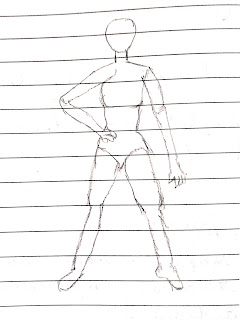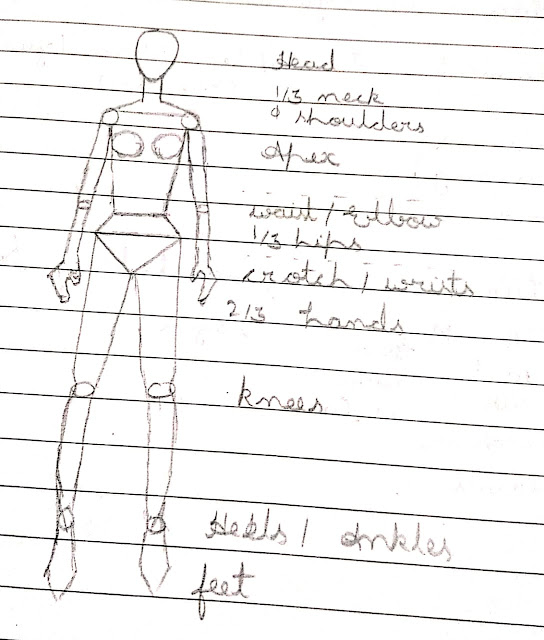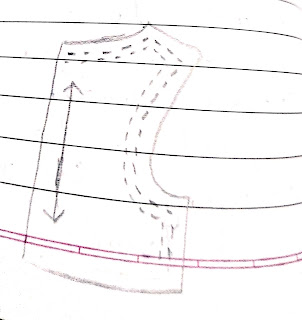An overview of fashion designing | Fashion design curriculum
What do fashion designers do?
Fashion designers develop ideas, concepts or drawings to create a whole new fabric.
Charles Frederick Worth is one of the famous names in the field of fashion design. He is called the father of fashion design. He was the first designer to start a label. He had dressed famous actresses, models and singers of his time. He has started his career in fashion design with an internship.
Which market should you target as a fashion designer?
Fashion designers design merchandise for three markets.
- Mass market: example, Marks and Spencer
- Ready to wear, or, pret-a-porter, or, off the rack
- Haute couture: where skill, craft and time are required. Where designers work directly with the clients, and a dress could cost thousands of pounds. Examples of Haute couture are Versace, Yves Saint Laurent and Christian Dior.
Haute couture guidelines
There are a set of guidelines from the Federation Francoise de la couture. The fashion designers who follow its guidelines are featured in Paris Fashion Week.
Syndical Chamber of Haute Couture
It is a group of 18 members including Coco Chanel, Christian Dior, Pierre Cardin, who decides if the new emerging house is Haute Couture house.
Skills required for a fashion designer?
Below is the list of skills that are required to be a fashion designer.
- Sewing skills are a must, to quickly view your design on a model or mannequin
- Drawing and sketching skills
- Knowledge of current fashion trends
- Knowledge of fibres
- Communication skills
What is fashion?
It refers to a type of clothing, accessory, or shoe that is favoured by a large segment of the people at any given time. Example: Polka dots, 1980s style of dress.
Terminologies related to fashion
- Apparel
- Garment and garment component
- Silhouette, which means the shape of clothing style. For example, straight, bell and bustle.
- Avant-garde meaning wild designs
- Fad vs classics: classics include suits, jeans etc.
- Fashion year and fashion week: fashion week are organised every year, generally in September and February.
- Fashion cycle
Fashion cycle
History of fashion (European perspective)
19th-century women's clothing: Bridal gown used to be tight, cinched waist, heavy ornamentation and a full skirt
Men's clothing: high collared shirts, vests, trousers, waistcoats and tuxedos.
- Regency influence was inspired by King George. Fashion used to be empire waist dress lines, classic Greek lines, and thin, fine fabrics.
- Victorian influence
- Gothic influence
- The romantic movement: Women started wearing corsets, men started wearing frock coats with tails.
John Redford designed the first tailor-made two-piece jacket and skirt.
Fashion timeline
1920s fashion or the roaring twenties: Flapper dress and comfortable clothes
1950s fashion: poodle skirts, trapeze style dresses. Fashion houses like Dior and Balenciaga became famous.
The 1960s/70s fashion: pop culture, colourful dresses, Bell bottom pants. Givenchy LBD was showcased in the movie Breakfast at Tiffany's.
1980-1990s fashion: tacky fashion, eg. stirrup pants, parachute pants.
2000s fashion: sustainable, high-tech and vintage clothing. Katie Jones is one of the fashion designers who is working for sustainable fashion.
Elements of fashion design
- Line: seam, decorative lines, piping
- Shape: hourglass, wedge, tubular, Bell, A-line
- Texture: it can be incorporated in a design in three ways, those are, 1) throughout using cotton or wool fabric; 2) embellishments: embroidery; 3) mix and match as in a scarf
- Colour: neutral colour, warm/cool colours, monochromatic colour scheme, complementary and analogous colour schemes
Principles of fashion design
- Balance: symmetrical and asymmetrical
- Proportion: whether sizes are in proportion or not
- Rhythm: human eyes tend to move with the apparel. Repetition, gradation and radiation are the three types of rhythm in fabric.
- Emphasis on a concentrated area
- Harmony
Fashion design styles (theme)
- Bohemian style: example, a person wearing pleasant blouses, tie-dye jeans, headscarves or intricate designs and patterns
- Arty: example, mix different designs, colours and patterns, Graffiti prints
- Chic + shabby chic: New with antique. For example, monochromatic colour schemes, bold statement accessories, asymmetrical hemlines, and sleek, clean lines
- Punk: Edgy look. Examples, skinny jeans, leopard print, spandex, bright colours etc.
- Western: example, blue jeans, fringe, denim jackets, and cowboy boots
Fashion market research
Fashion market research refers to find what, why and where are the customers shopping.
Mood board or inspiration board:
A designer can collect all his creative ideas on a sheet of paper. This collection is called a mood board. An example of a digital mood board is Pinterest.
The design process
Colour story
- Staple: white, black, beige and blue
- Seasonal: preferring light colours in summers
- Fashion
- Accent: For example, using colours in small amounts to accentuate a garment.
Range development
Making a plan. Mostly in numbers.
Fabric and trim selection
Design considerations
Planning various designs of your collection in your mind.
Fashion design illustration
- Croquis

Croquis - Sketch your design on croquis

design on croquis - Boldly illustrate your designs (parts)
- Add folds, wrinkles and pleats

folds, wrinkles and pleats - Illustrate prints and patterns. For example, floral patterns or Polka dots
- Finalise your drawing with ink shading and colour. Colours can be inspired by the colour story in your mood board
Sketching with flat schematics
There are three kinds of design schemas:
- Flat: includes the front 2D view
- Float: includes the 3D view
- Illustration: on model or croquis
Croquis for flats
 |
| Croquis for flats |
Technical lines on a fashion figure are princess lines, bust line, hip and waistline.
Garments sample stages:
- Muslin
- Fit sample
- Sew by sample
- Sales sample
- Photo sample
- Size run
- Pre-production sample
How fabric is formed?
Fibres are converted to yarn. Yarn is then converted to a piece of fabric.
Filament yarns are continuous in length. Silk is an example of a filament yarn. While cotton fibres have shorter lengths. Hence they are called staple fibres.
The process of drawing and twisting fibres is called spinning.
Fibre categories
1) Natural fibres include plant, animal and metal fibres.
- Plant fibres: cotton, flax, linen, jute and hemp are examples of plant fibres
- Animal fibres: wool, silk, cashmere, camel
- Metal fibres: gold, silver, aluminium, copper
2) Regenerated fibre includes Rayon
3) Synthetic
How are yarns converted to fabric?
There are two kinds of processes of making fabric out of yarns.
- Weaving: plain, twill and satin
- Knitting: Jersey, rib and interlock
Fabrics are formed when warps and wefts are interwoven or interlocked into each other.
Laced fabrics: Trimming laces that are used for embellishment purposes are mostly made up of nylon.
Non-woven fabrics: when a mass of fibre is held together with a fusing action of heat, adhesive, or chemicals.
Fabric performance characteristics and finishes
Abrasion resistance, absorbency, antibacterial, antistatic, flame retardant, stain resistant, wrinkle recovery are some kinds of finishes.
Draping technique in fashion design
- Fitting the toile: cheap fabric is used. It is tested on a mannequin or a model.
- Second fitting
- Altering the pattern: for example, change in sleeve length or reposition shoulder notch.
- Cutting and laying your pattern
There are three kinds of cutting
- Straight grain which is parallel to the selvedge.
- Cross-grain is perpendicular to the selvedge.
- Bias cut at 45 degrees to the selvedge.
Preparing the fabric. Pre-shrunk and the washed fabric is preferable.
Laying your pattern: you can lay your pattern in three methods.
The double layout is the easiest method. The single layout gives an asymmetrical cut. The Crossway layout is more complex.
Marking the pattern on the fabric. For example mark dart endings pockets etc.
Garment construction
Seams
Hand sewing techniques
- Basting stitch
- Hemming stitch
- Blind hemstitch
- Cross stitching
Linings
Question: Which stitch uses thread from outside of the fabric and makes a smaller stitch within the hem?
Answer: Blind hemstitch
Finally, draping the mannequin
Fabric selection and sourcing
You can source fabrics from
- Textile producers
- Converters: that converts unfinished fabrics to finished fabrics
- Importers: from other countries
- Agents
- Stockist wholesalers
- Jobbers: they are disposable agents
Things to check while sourcing fabrics
- Lead time
- Minimum quantities that suppliers enforce
- Fabric width, so that pricing is based on length
- Repeat orders
- Negotiate on pricing and check payment terms
- Sustainability and ethical policy
Finding your suppliers
You can find suppliers on the internet and in trade shows, like, Textile Forum, Premiere Vision, the London textile fair etc.
Make fabric and trim storyboards
This may include fabric-samples materials and trims etc.
- Fabric Style: summer print, black and white check, chevron pattern etc.
- Article number
- Width
- Care instructions etc.
Patternmaking for fashion design
Materials: pattern paper and equipment, such as scissors, measuring tape etc
- Pattern
- Marking the block
- Dart manipulation
- Slash and spread
- Sleeves
Sizing, grading and measurements
Size, for example, UK 6 to 12 and US 2 to 14.
Grading: S, M, L, XL (British standards)
Measurements include neck girth, shoulder-length, top bust girth, bust girth, underbust girth, waist girth, high hip girth, hip girth, arm length, front length, back length, waist to hip, waist to knee, outside leg, inside leg, bicep, elbow, wrist girth.
- Among women, sizes are described by bust, height, hips and waist
- Men by chest to fit a jacket; waist and inside leg for trousers; neck sizing for shirts
- Children by height
Collars, cuts
There are six types of collars
- Right angle construction collars
- Stand up / mandarin collars
- Flat collar
- Shirt collar
- Button-down collar
- Tailored collar
Pockets
There are two kinds of pockets,
- Set-in
- Patch (outside)
Garment support and structure
Alignment to the body shape is required. Examples include heavily draped bustle, corsets and corseted crinoline, Empire lines.
Supportive materials
- Boning in corsets.
- Wadding
- Netting inside English wedding dresses
- Padding: creating a tunnel which is then stuffed with cotton etc. For example, shoulder pads
- Fusing/interlining: example, collar, cuffs, waistbands etc.
How to add volume to a garment?
We can add volume to a garment by adding
- Gathers
- Darts
- Drapes (eg. Cowl)
- Pleats
- Flare: by slash and spread technology in the skirt for example
- Fabric
Finishes, buttons and trimmings
- Lining: adding an inner layer in a garment
- Facings: stitching raw edges in garment
- Fastenings: buttons, zippers etc.
Fashion business: start your label
1) Finding garment manufacturer
2) Creating a garment tech pack. Tech packs contain details of specifications of designs. What should a tech pack include?
- Cover page which has front and back sketches with white fill
- Inspiration page that has designer's vision
- Callouts page that has design details
- Print-fabric replacement page
- Colourway page
- BOM page that contains trims, labels, fabric packaging etc.
- Fold page for packaging purpose
- Label placement page
- Proto specs page which contains measurements, first fit, second fit, graded specs page
3) Request a sample before going to production
4) iron out the details with manufacturers. Example delivery dates, minimums, payment terms, and pricing
5) Follow-ups
6) Track all comments and revisions in your tech pack
Developing a business plan
- Draft a summary: description of your company and its goals. For example, any particular item that you are planning to design
- Discuss specifics: your specialisation in certain types of apparel say, kids-wear or athlete wear etc. This also includes production details such as Haute couture or mass production
- Research the fashion market: to collect information about your target market, demographics etc.
- Developing a marketing plan: plans for social media advertising, fashion shows or product sampling
- Outline your organisational structure: as a fashion designer you can hire artists, tailors, graphic designers, models and fashion consultants
- Draft a cost analysis: the amount of money that you will need to start your label. Examples include purchasing supplies, employee salary, materials, manufacturing, fashion mockups and photography
- Business registry under a limited company, partnership or sole trader
- Business insurance: it is optional. Example commercial property insurance and limited insurance
Creating a clothing label
- Develop the design: sketch your design
- Make a prototype: sample dress to show to buyers
- Organise your business: regarding taxes, lawyers and legal names.
- Establish a pricing model: a base would be to earn a profit of 30 to 50% greater than your expenses
- Fund your business: banks, investors, loans and credit cards
- Sell: open a small store or an E-Commerce site
Strategy 1: come up with a 'must-have item'. Example Diane Von Furstenberg and her signature wrap dress
Financing your clothing label
- Startup loans from 500 Euros to 25000 Euros are granted in the UK
- Grants
- Crowdfunding
- Business loan (from banks)
Marketing your clothing line
Remember 4 P's:
- Product: in fashion, you are designing a product that people don't know if they want/need it yet. So use marketing techniques.
- Place: regardless of where you are selling, you should always have a website for your brand.
- Price
- Promotion: event hosting etc.
The fashion industry in the UK
- 6.5 billion euros of export
- Employees over 5 lacs
Next have over 200 stores in 40 countries and 500 retail locations in the UK. It also operates through the mail operation.
Burberry is valued at over 4.8 billion euros. Its visual identity is Burberry checks in the trench coats
New Look started with a single Store. Now it has over 501 stores in the UK and 276 stores in other countries.
Marks and Spencer have annual sales of 10.3 billion euros
The Arcadia group: its subsidiaries are Topman and Topshop. Have annual revenue of 2.1 billion euros.
Unlike the US, it is not common to see athletic or casual wear worn in the UK.
Career opportunities in fashion design
Requirements: a degree, an internship or a job under a fashion designer.
Career positions as a fashion designer:
- Fashion designer
- Assistant designer: sketch development, material presentation, clothing demos and fabric sourcing.
- Patternmaker: creating patterns and specs, uses CAD
- Fashion merchandiser: researching, planning and identifying fashion trends
- Fashion buyer: responsible for planning sales, monitoring inventory orders, pricing vendor orders and selecting merchandise for sale
- Assistant fashion buyer
- Merchandise manager
- Design director
- Fashion director: attends the shows in London, Paris, Milan and New York
- Couturier
- Costume curator: designs apparel or accessories from other eras, cultures, or contemporary designs
- Fashion forecaster
- Tailor
Developing your brand identity
- Website designing, packaging, and logos. Also, think of a few words to describe your brand.
- Consistency in labelling, packaging, social media and your designs
- Define who, what and why you are
- What makes you different from everyone else?
Preparing for fashion week
Suppose you are invited to the London Fashion week.
You are expected to know the prices of all your products in dollars Euros and pounds.
Follow up with your contacts, press releases and emailing will give you an extra edge above your competitors.
Activity 1
Find current fashion trends on the internet, stores and fashion magazines.
Activity 2
Visit the latest fashion shows, galleries, and read fashion magazines.
Activity 3
Determine necklines, hemlines, horizontal and vertical lines in your clothes.
Activity 4
Imagine you are going to start a label. Choose the supplier who is closest to you.






Comments
Post a Comment